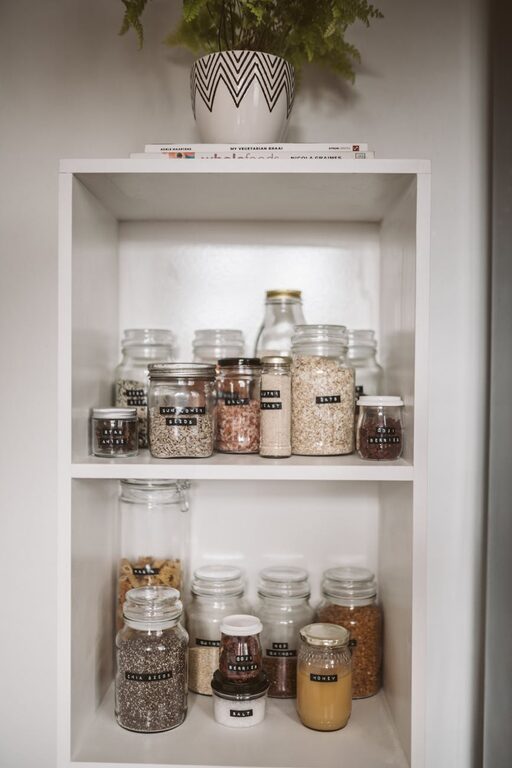Keeping your fridge and pantry tidy can feel like a daunting task, but with a few simple strategies, it becomes manageable and even enjoyable. A well-organized kitchen storage not only saves time while cooking but also helps reduce food waste and keeps your home feeling fresh. In this post, we’ll explore practical ways to maintain a tidy fridge and pantry, including storage tips, cleaning routines, and organization hacks.
Why Organizing Your Fridge and Pantry Matters
Before diving into the how-to, it’s important to understand the benefits of keeping these areas tidy:
– Saves money: You can easily see what you have, preventing duplicate purchases and food spoilage.
– Saves time: Finding ingredients quickly streamlines meal preparation.
– Reduces waste: Proper storage extends the life of fresh goods.
– Boosts hygiene: Keeping shelves clean reduces the risk of bacteria buildup.
– Creates peace of mind: A neat kitchen contributes to a calmer, more inviting space.
Preparing to Organize: What You’ll Need
Start with a quick inventory of your fridge and pantry contents. Gather some supplies to make the process easier:
– Cleaning spray (preferably non-toxic)
– Sponges or cloths
– Containers or bins for grouping items
– Labels and markers
– Trash bags for expired or unwanted food
– Shelf liners (optional)
How to Tidy Your Fridge
Step 1: Empty Everything Out
Remove all items from your fridge. This allows you to clean every surface and assess each product’s freshness. Place perishables on a countertop or cooler to keep them safe temporarily.
Step 2: Clean Surfaces Thoroughly
Wipe down shelves, drawers, and walls inside the fridge with a mild cleaning solution. Don’t forget the door seals and handles. Dry everything before returning items.
Step 3: Sort and Group Items
Check each food item’s expiration date and condition. Discard anything past its prime or no longer wanted. Group similar items together, such as:
– Dairy (milk, yogurt, cheese)
– Meats and proteins
– Fruits and vegetables
– Condiments and sauces
– Leftovers
This makes it easier to find what you need and prevents cross-contamination.
Step 4: Use Clear Containers and Bins
Invest in clear, stackable bins or containers to keep smaller items organized and visible. For example, put all yogurt cups in one bin and salad dressings in another. This reduces clutter and makes cleaning simpler.
Step 5: Set Zones in Your Fridge
Designate different shelves or drawers for specific categories:
– Bottom shelf: Store raw meat and fish here, in sealed containers to avoid drips.
– Middle shelves: Perfect for dairy products and leftovers.
– Vegetable drawer: Keep fruits and veggies in this humidity-controlled space.
– Door racks: Great for condiments, juice, and smaller bottles.
Step 6: Label Everything
Label shelves or bins with contents or category names. This helps household members return items to the right place, maintaining order.
How to Organize Your Pantry
Step 1: Clear and Clean
Just like with the fridge, start by emptying your pantry completely. Wipe down shelves and sweep the floor to remove crumbs and dust.
Step 2: Categorize Pantry Items
Sort your food into groups such as:
– Grains and pasta
– Canned goods
– Baking supplies
– Snacks
– Spices and seasonings
– Breakfast items (cereal, oatmeal)
Step 3: Use Containers and Jars
Transfer loose items like flour, sugar, and cereals into airtight, transparent containers. This keeps them fresher longer and prevents pests. Uniform containers stack nicely, saving space.
Step 4: Label Containers Clearly
Use waterproof labels with either names or pictures. This makes it easy for everyone to find and replace items correctly.
Step 5: Optimize Shelf Space
Arrange frequently used items at eye level. Place heavier or bulkier goods on lower shelves. Consider using tiered shelf organizers or lazy Susans for smaller jars and cans to maximize visibility.
Step 6: Maintain a First-In, First-Out System
When restocking, place new items behind older ones to use older products first. This reduces waste and keeps your pantry cycling efficiently.
Tips for Ongoing Maintenance
– Weekly check: Take 5 minutes each week to tidy up your fridge and pantry, checking for spills, expired items, and misplacements.
– Keep a shopping list: Maintain a running list of running low or missing items; this avoids overstocking.
– Use clear storage: Seeing your food encourages use before expiration.
– Store food properly: Follow storage guidelines for perishable and dry items to extend longevity.
– Involve the household: Teach your family or roommates how to maintain the system in place.
Conclusion
A tidy fridge and pantry create a foundation for an organized kitchen and healthier eating habits. By dedicating time to clean, categorize, and store your food smartly, you’ll save time, reduce waste, and enjoy a more efficient cooking experience. Try these tips one step at a time and customize them to suit your lifestyle and kitchen space.
Happy organizing!

